We started our day in the District Six Museum. District Six had been designated as a whites only area and all non-white residents (750000 of them) were removed and relocated to townships around Cape Town. After the end of apartheid the museum was created to tell the story of the people who had lived there. Former residents were invited back to indicate where in the District they had lived and to share information about their past so that those stories should not be forgotten. The museum celebrates the diverse community that had once lived in this area.
These are former street signs
After visiting the museum we headed to the Langa Township, which houses about 250000 residents. On the ride there Tricia pointed out that the first hospital to perform a heart transplant was located in Cape Town…just an interesting tidbit to share. On the way to the township our tour guide shared with us that after apartheid was lifted tourists would start to come to the townships and snapped pictures and peered into houses and the people felt like they were living in zoos. This company (as well as others) decided to start these tours in order to educate people on how things are here and to help prevent things like this from happening in the future. He asked that we take what we learned and the memories we have and share them with family and friends. The homes we would be visiting were homes that we were encouraged to take pictures of and I am assuming receive some sort of compensation to let this company use their home for the tours. An interesting observation that I made was that there were hardly any adults out and about but mostly children. I would assume that most of the adults were at work and though we were there on a Thursday it was the day before Good Friday and the children were off of school. All children are legally required to attend school.
Here is some sort of butcher:
We started our tour by visiting a local pub for African beer tasting (umqomboti). We passed around a large metal container containing the brew everyone tasted it and there was singing and laughter and a very positive start to this trip.
These pictures were taken while walking around the township:
The children really wanted to have their photo taken, a common theme I have found around the world!
This township had 3 types of housing that it offered it’s residents. The first we were shown was a very drab concrete apartment with a common room in the middle and 3 or 4 bedrooms off of that common room. There were up to 12 people that lived in each of these bedrooms.
Though we were allowed to take photos in these space I did not necessarily feel comfortable, but I did go back and ask this woman if I could take her photograph:
After this space we visited the next quality level apartment. It was a two room (bedroom and living room/kitchen) plus bathroom apartment. This apartment housed a family of 3 and I believe this is similar to what a good portion of people are living in.
It was explained to us that regardless of income or social status appearance was veryimportant to the people of South Africa, and I would concur that everyone we met was nicely dressed and appeared to be clean and well taken care of. We came upon a few barber shops and beauty parlors.
I thought this was a fascinating picture, an old shack of sorts in front of some new more expensive housing with Table Mountain in the background:
After this we came to the informal settlements (shanty town or slums we may have called it). These were right next to some new free housing that had been built to alleviate the amount of people in the informal settlement areas.
Here are the free houses, what is on top collects rain water:
Demand for this housing was much higher than the pace at which they could be produced. There is a huge concerted effort to make great strides as quickly as possible in anticipation of the millions of people who will be flocking to South Africa for the World Cup this summer. As we would drive on the highways in Cape Town and even out to the wineries (this happens on day 4) we observe many of these informal settlements but we cannot even realize what the rest of the townships will look like. We had the opportunity to buy some crafts from people who lived in the informal settlements and I think to be able to buy directly from them instead of from a shop in Cape Town whose goods may or may not had bought form the townships was an ideal situation.
We got back into the van to be taken to Robben Island. It was not until a couple of days before we arrived to South Africa that anyone even realized that you needed to purchase tickets online pretty far in advance in order to go to Robben Island (you have to take a ferry here).
Here is the Ferry:
A view of the back of our ship from the ferry:
Robben Island:
Most people who I know were unable to go unless they were on a Semester at Sea trip or they had planned ahead. So I felt quite honored to be able to see this very historic site. This particular company is given tickets dauly because they are a ‘black economically empowered’ company run by township people. Robben Island is the home to the prison where Nelson Mandela spent 20 of his 27 years in jail along with many other political prisoners. One of the most interesting things that I learned was that the political prisoners were in maximum security while the hardened, violent crime criminals were placed in medium security. This was done because the political prisoners were seen as a greater threat because of their knowledge and information they held. I did not know much if anything about Robben Island prior to my trip there but I understand that it to be a very significant place to visit and after spending an afternoon there I knew why. We were toured around the island on a bus and shown different pieces of the island one area had housed a leper colony,, here is the cemetary:
we saw the solitary confinement unit of which one space was created for a particular political prisoner who they felt were not able to be in the same space as the other prisoners. He still managed to share his thoughts with other prisoners. Though he had his own space, he was still given time outside by himself. The other prisoners took up tennis and would put notes to him in the tennis ball and then ‘accidentally’ hit it into his area without the guards noticing, and he would return the balls to them with his messages.
We also saw the limestone quarry where the prisoners would work every day, many of the prisoners developed permanent eye damage and lung cancer because of inhaling the limestone day in and out. During a memorial service a lot of the men, including Nelson Mandela returned to the quarry and each placed a stone to form this pyramid as a way to say they would never forget. Nelson Mandela has said that these stones would represent “a triumph of human spirit against the forces of evil.”
The man who was giving us the bus tour was a relative of someone who had been a prisoner on the island and then when we arrived to the jail we were handed over for a tour of the jail to someone who had actually been a political prisoner on the island. We toured though the jail and were able to see the cell where Nelson Mandela lived during his time at Robben Island.
The last thing we got to do was hear the story of the man who had given us the tour, he had been arrested and tortured because he had been peacefully protesting as a student against Apartheid. It was a moving story and it is quite impressive how day in and day out this man is able to come back to a place to educate people on this awful time in his life.
We also found out that there was about 300 people who lived on this island now most of who were people who worked there and their families, which also meant that there was a school on this island for the children who lived there with their families. Before departing the island we saw a penguin colony and then returned to the ferry to take us back to Cape Town.
We were taken back to the Guest House to freshen up before dinner. I did not have much time to process my day but conflicting feelings seemed to be the theme for me throughout my time in South Africa and this day certainly contributed to that. Tricia and I ended our day at the Africa Café which served up a communal feast filled with dishes that were native to different countries in Africa.
So much delicious food and I am glad that I had the opportunity to taste a variety of dishes because of the 47 countries that exist in Africa I am only getting to visit 3 of them this go around. We also shared a bottle of Constantia wine, knowing that South Africa is known for their wines and this would not be a winery we would be going to (day 4). The meal and wine were delicious and it ended with some singing, drum playing and a quick dance! We returned to the guest house and geared up for tomorrow which would be a day of outdoor adventures.


















































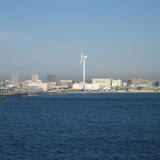
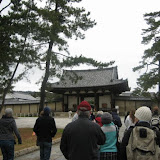

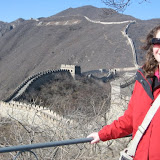
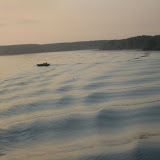
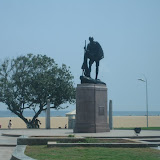
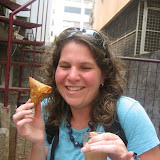
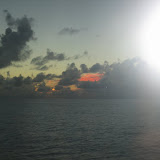
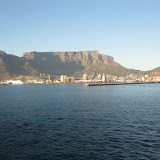
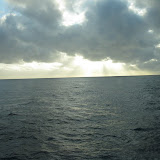



Love your 'picture story'. Awesome to share it with the world..
ReplyDeleteThank you Ida! And thank you for reading!
Delete